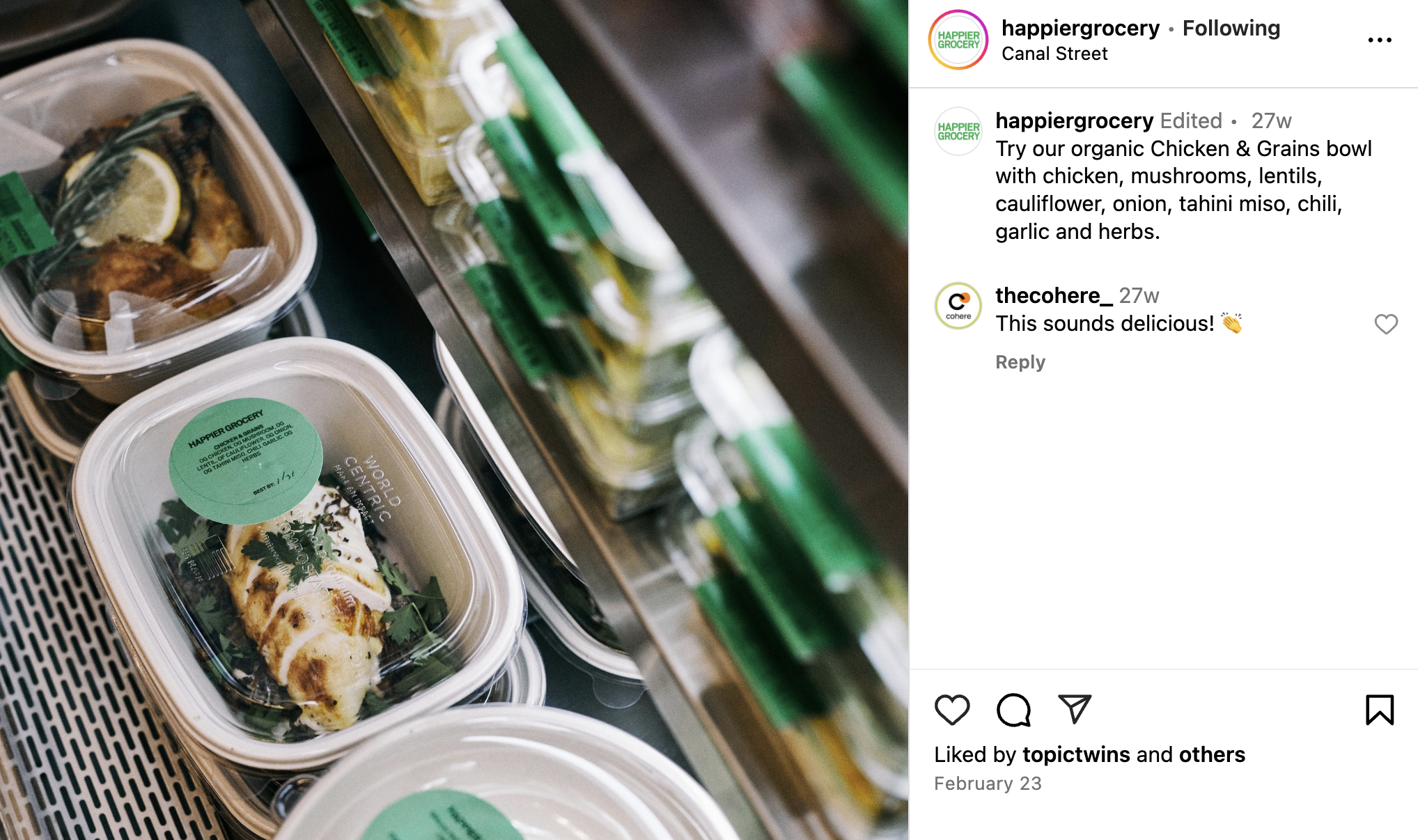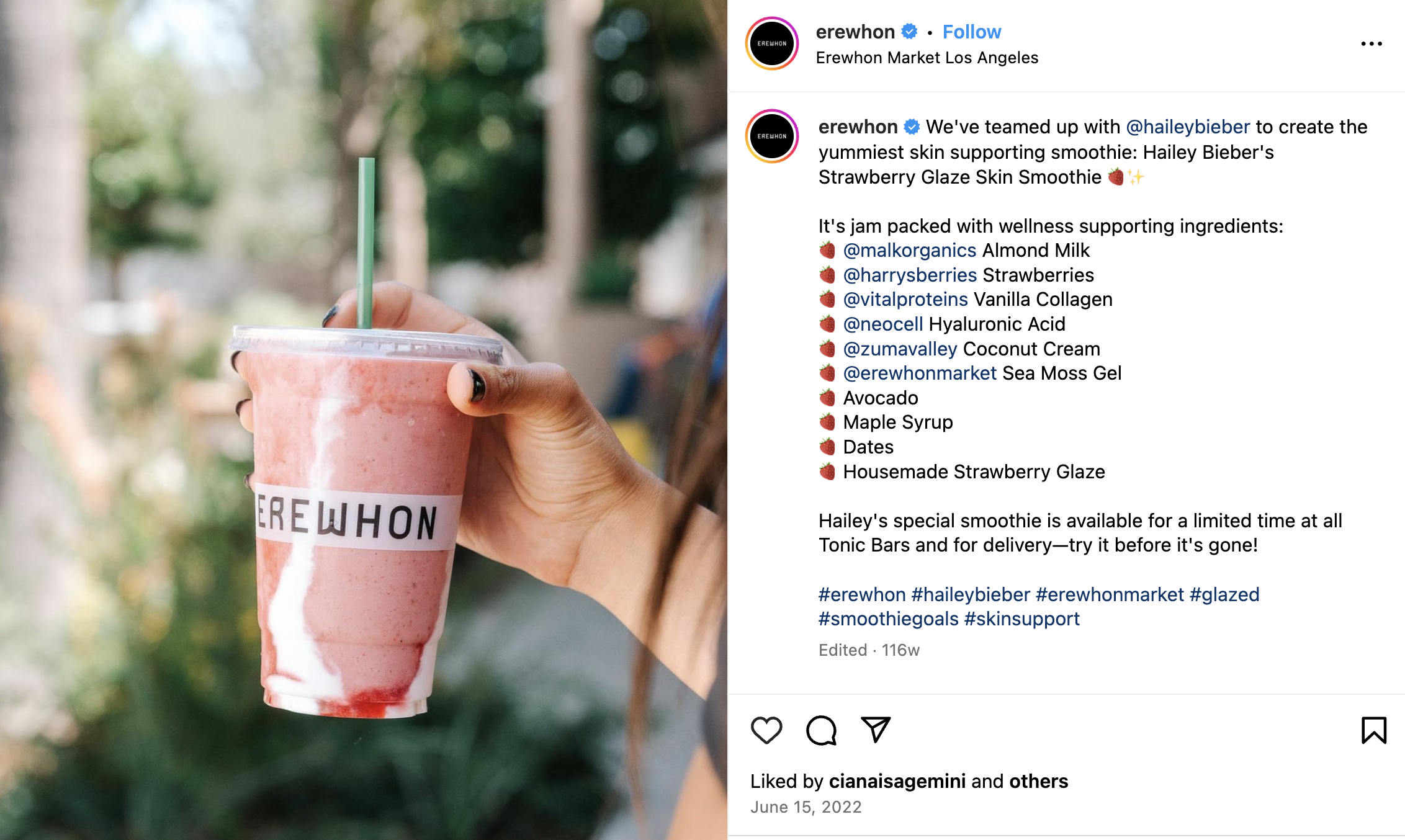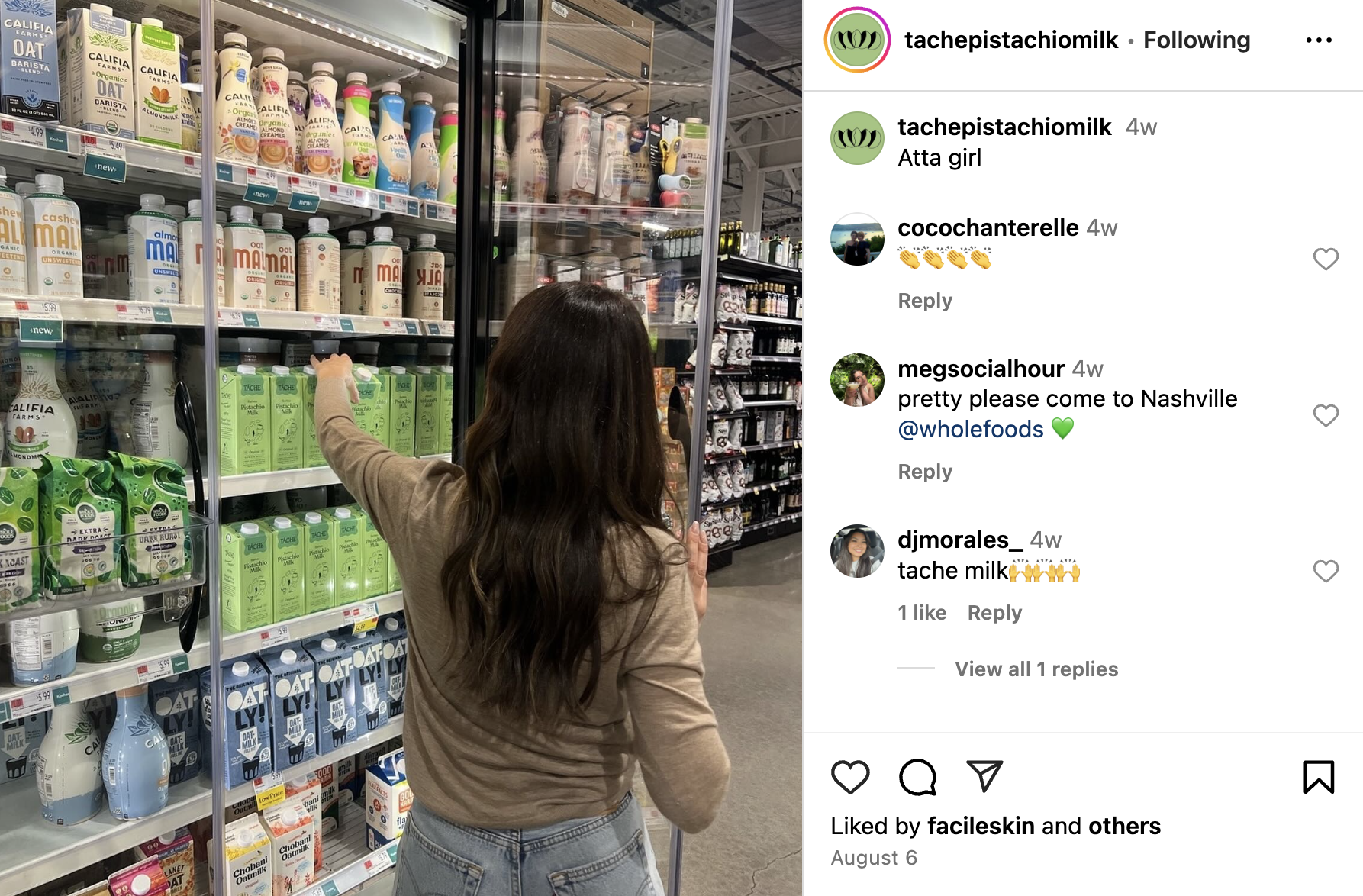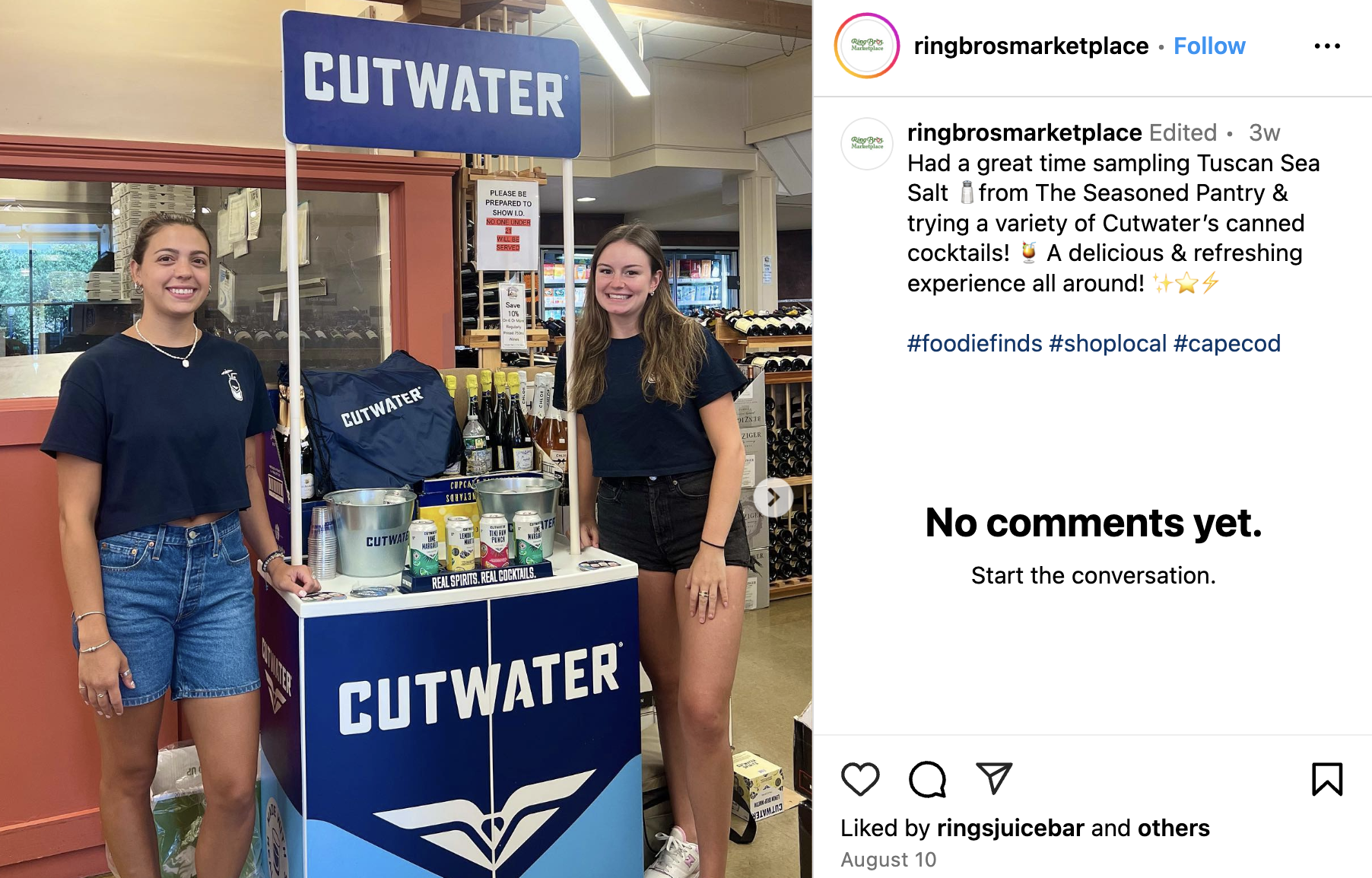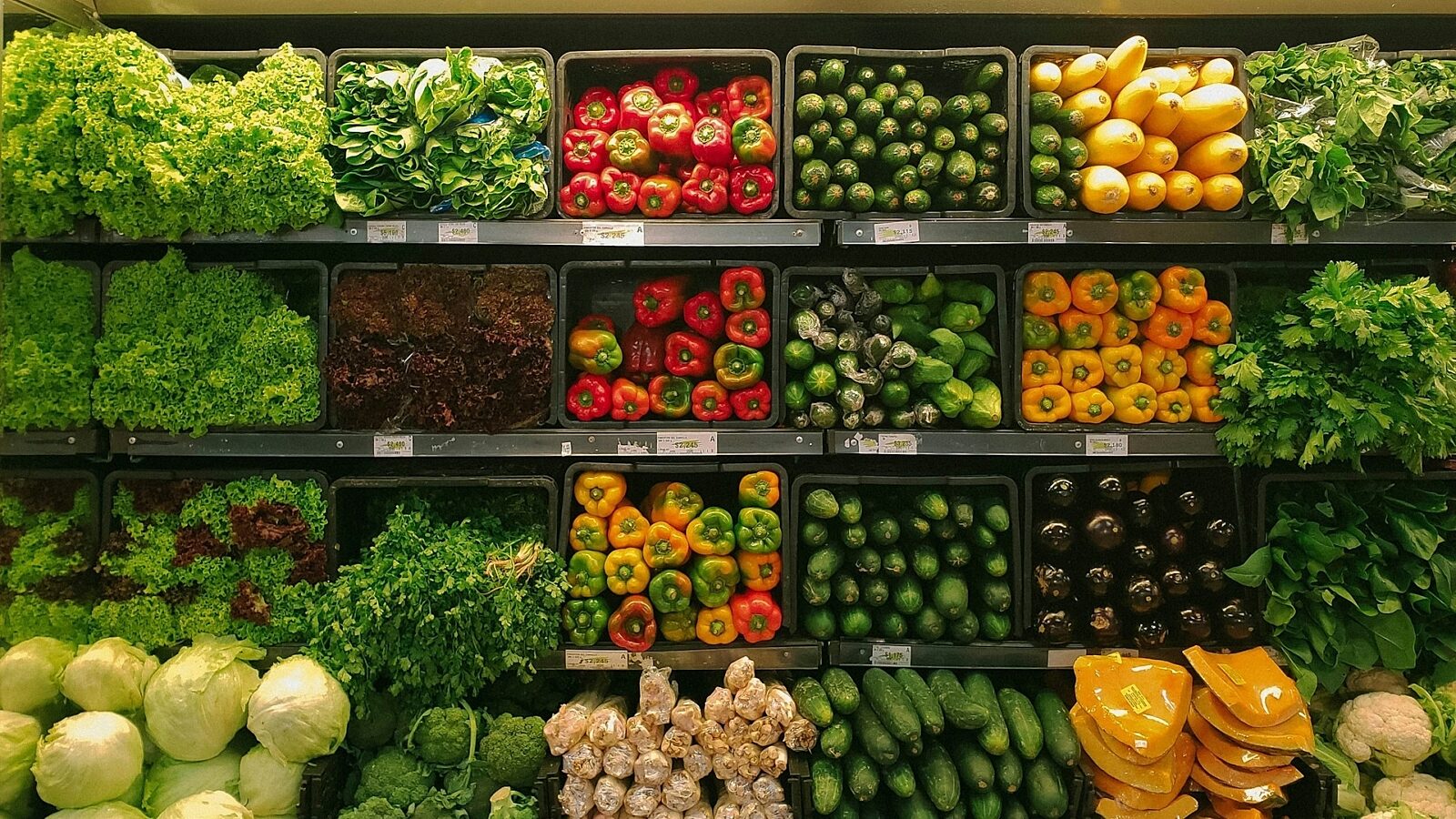
Grocery Store Trends: Stats and Trends Shaping 2024
This list includes all the grocery store statistics and trends every grocery business owner/operator should know.

Tessa ZuluagaAuthor
According to market research conducted by DriveResearch, in 2024, consumers spent an average of $174 per grocery trip. This significant stat raises important questions: How did consumers choose where to spend that $174? What factors influenced their decision-making process when selecting a grocery store? And, perhaps most crucially, what were they most likely to purchase?
In an era of increasing options and evolving consumer preferences, understanding grocery store trends is vital for both retailers and consumers alike.
In this article, we’ll unpack the top 10 grocery store trends in 2024 and how your business can capitalize on them.
Let’s dive in.
The top 10 grocery trends in 2024
1. Online grocery shopping
The use of grocery delivery services in 2024 has risen by 56% compared to 2022.
This first trend, which allows customers to order groceries online and receive home delivery or pick them up in-store, has transformed the traditional grocery shopping experience.
While online grocery shopping existed in niche markets for several years, it gained substantial traction in the mid-2010s. The trend was accelerated dramatically by the COVID-19 pandemic in 2020, which necessitated social distancing and led many consumers to seek contactless shopping options.
According to Oracle, Walmart (including Sam’s Club) is currently the largest US online grocer, with more than 25% of the market share. However, there are many large competitors in the grocery industry delivery game including Amazon Fresh, Kroger, Target, and Albertsons.
Online orders exist in the supermarket industry because of the convenience they provide. Shoppers can browse and purchase groceries 24/7 from any device. This eliminates the need to physically visit stores, reducing time spent on errands. Here’s how to capitalize on this trend:
Develop a user-friendly platform - Invest in a website and/or mobile app that ensures easy navigation and product search functionality. Make sure check out offers every fulfillment option (Home delivery services, curbside & in-store pickup)
Optimize inventory management: Implement real-time inventory tracking, and ensure online availability matches in-store stock.
Personalize the shopping experience: Use AI to provide personalized product recommendations, and allow customers to create and save shopping lists.
By implementing this strategy, grocery stores can not only adapt to the online shopping trend but also create new opportunities for growth and customer engagement in the digital marketplace.
2. Value shopping is up
As food prices continue to increase, shoppers are seeking higher-value products.
In 2024, "value shopping" in the grocery store context refers to consumers prioritizing cost-effectiveness while still seeking quality in their purchases. This trend involves finding the best overall value for their money. According to Food Industry Executive, consumers most commonly consider price (32%) and product quality (15%) to determine whether they’re getting a good value when snack shopping.
Grocery businesses can effectively capitalize on this trend by implementing several strategies that align with consumers' desire for cost-effectiveness without sacrificing quality.
Here are some key approaches:
Highlight value offerings
Optimize pricing strategies
Leverage private labels
Educate consumers
Offer flexible shopping options
By implementing these strategies, grocery businesses can attract and retain value-conscious consumers, drive sales, and build long-term loyalty in a competitive market.
3. Sustainability
About 95% of consumers say they are trying to take some action to live sustainably.
The trend of sustainability in grocery stores involves implementing environmentally friendly practices throughout both your supply chain and in-store operations.
Consumers are becoming increasingly aware of the environmental impact of their purchasing decisions. Because of this, sustainability in general has emerged as a large trend in most industries. Consumers continue to care more and more about their carbon footprint.
According to 2023 research by Grocery Doppio, 37% of shoppers will pay a premium for sustainable products and they’re willing to pay between 11%-17% more for sustainable products.
Grocers can adopt this trend by:
Offering more eco-friendly and ethically sourced products
Reducing plastic packaging and promoting reusable alternatives
Minimizing food waste
Improving energy efficiency in stores
Supporting local and regenerative agriculture
By embracing these sustainability practices, grocers can appeal to environmentally conscious consumers, reduce operational costs, and contribute to a more sustainable future. This trend not only helps in building brand loyalty but also positions the store as a responsible corporate citizen, which is increasingly important to consumers in 2024.
4. Self-checkout & automation
Yes, customers as cashiers is trendy right now.
This trend involves the implementation of various technologies that can help reduce labor costs and improve operations. The trend includes:
Self-checkout kiosks
Scan-and-go mobile apps
Cashierless stores
Automated inventory management systems
Robotic assistants for restocking and cleaning
 Catherine Douglas Moran/Grocery Dive
Catherine Douglas Moran/Grocery Dive
Although this may seem like these advances would deter from the customer experience, according to Capital One, 73% of consumers prefer self-checkout over traditional staffed registers. It seems that this trend will only continue to grow as nearly 40% of grocery store registers in the U.S. are self-checkout kiosks.
Consumers likely care because these solutions provide convenience. Self-checkout can create a faster checkout process, especially for small purchases. According to Wifi Talents, self-checkout stations can reduce customer wait times by up to 30%, and 65% of consumers believe that self-checkout lanes are faster than traditional lanes.
By adopting these self-checkout and automation technologies, grocery stores can improve operational efficiency, reduce labor costs, and offer a more streamlined shopping experience.
However, it's crucial to balance automation with the human touch, ensuring that customer service remains a priority and that the shopping experience caters to all customer preferences and needs. It’s also important to install security cameras as over 20 million Americans have stolen from a self-checkout kiosk.
5. Wellness products
Grocery shopping in 2024: where you go in for milk and bread, and come out with a year's supply of collagen peptides and something called 'ashwagandha’.
While this might sound like an exaggeration, it's not far from the reality of today's grocery stores. The wellness trend has transformed ordinary supermarkets into veritable health emporiums, reflecting a significant shift in consumer priorities and shopping habits.
The wellness product trend in grocery stores is characterized by an increased focus on products that promote health and well-being, including vitamins, supplements, functional foods, and natural remedies. This trend has gained momentum as consumers become more health-conscious and proactive about their health. Shoppers are seeking out products that offer specific health benefits, from immune system support to stress relief.
McKinsey & Company conducted a Future of Wellness Study and found that in the United States alone, it’s estimated that the wellness market has reached $480 billion, growing at 5-10% per year. The same study found that 82% of US consumers now consider wellness a top or important priority in their everyday lives. This is especially true among Gen Z and millennial consumers, who are now purchasing more wellness products and services than older generations.
To capitalize on this trend, grocers can expand their wellness sections, offering a wider range of vitamins, herbal supplements, and functional foods. They can also integrate these products throughout the store, creating "wellness zones" in relevant departments. Additionally, implementing clear labeling systems that highlight health benefits and sourcing information can help guide customers toward products that align with their wellness goals.
6. Prepared foods and juice bars
Today's grocery list: cereal, apples, and... wait, is that a sushi chef?
This evolution in grocery retail reflects a broader shift in consumer behavior and expectations. Today's shoppers are increasingly seeking convenience without compromising on quality or freshness. The prepared foods and juice bars trend in grocery stores caters to this demand, offering a solution for time-strapped consumers who want healthy, convenient meal options.
As consumers continue to prioritize convenience and quality in their food choices, we can expect to see further innovations in this space, potentially including more specialized cuisines, meal kits, and even in-store dining experiences. A majority of shoppers (55%) say they want easier shopping in the grab-and-go section, and prepared foods are filling that need.
For grocery retailers, embracing this trend means not just adding a few pre-made options, but reimagining the store as a food destination. Success in this area requires investment in kitchen equipment, staff training, and menu development. It also necessitates a deep understanding of local tastes and preferences to ensure that offerings resonate with the target customer base.
As we move further into 2024, the prepared foods section is likely to become an increasingly central part of the grocery shopping experience, transforming our weekly errands into culinary adventures.
Erewon is a great example of a grocery store that’s capitalized on this trend. Their smoothies cost around $23 each, but Erewhon executive vice president Vito Antoci told GQ the chain sells as many as 40,000 Hailey Bieber smoothies each month.
7. Loyalty programs/apps
In 2024, grocery stores are increasingly leveraging sophisticated loyalty programs as a key strategy to attract and retain customers. These programs offer personalized rewards, exclusive discounts, and tailored shopping experiences based on individual purchasing habits. Data shows that today’s average shopper has 18 loyalty programs on their mobile device; two to three of which are for grocery brands alone.
Modern loyalty programs can utilize data analytics to:
Provide customized product recommendations
Offer targeted discounts on frequently purchased items
Create personalized digital coupons
Reward customers for healthy eating choices or sustainability efforts
By fostering a sense of value and exclusivity, these advanced loyalty programs help grocery stores maintain a competitive edge in an increasingly digital marketplace.
One example is Safeway for U, Safeway’s loyalty program that gives shoppers points, coupons, and more.
8. Growth opportunities for smaller retailers
A recent notable trend in the grocery industry is the increasing consumer demand for products from smaller, local businesses. Grocery shoppers are showing a strong preference for locally-sourced, high-quality, and unique products, creating significant growth opportunities for smaller retailers within larger grocery store settings.
According to Capital One, American shoppers spent an estimated $3.81 trillion at local stores in 2023, and local retailers retain 289% more revenue for the local economy than chain stores do.
Key aspects of this trend include:
Dedicated shelf space for local and regional products
"Shop local" sections featuring small-batch and artisanal goods
Partnerships between grocery chains and local producers
Emphasis on products with local provenance and storytelling
This trend allows grocery stores to cater to consumers' desire for authenticity, sustainability, and community support, while also providing growth opportunities for small local businesses and adding diversity to their product range.
For example, Táche Pistachio Milk is now available at a few larger grocery stores like Target and Whole Foods.
9. Canned drink options
Alcoholic beverage sales in grocery stores are nothing new, however, today there is a plethora of canned alcoholic beverages that are trending.
The U.S. canned alcoholic beverages market size was valued at USD 11.05 billion in 2023 and is expected to reach USD 35.10 billion by 2033.
Grocery stores should consider allocating more shelf space to ready-to-drink (RTD) canned alcoholic beverages for the following reasons:
Variety: Stores can now offer a wide range of canned cocktails, from classics like margaritas and mojitos to craft concoctions.
Premium options: Many brands are introducing higher-quality, premium canned drinks to appeal to discerning customers.
Low-alcohol alternatives: Grocery stores are also stocking more low-ABV and non-alcoholic canned beverages to cater to health-conscious consumers.
Local focus: Some stores are partnering with local distilleries and breweries to offer regionally-produced canned cocktails.
This trend is reshaping alcohol sections in grocery stores, with canned cocktails often positioned as a bridge between beer and wine offerings.
For example, Ring Brother’s Marketplace in South Dennis, MA hosts occasional tastings of different alcoholic beverages in their store for shoppers to try.
10. Artificial intelligence and new technology
The integration of AI and cutting-edge technology is revolutionizing the grocery shopping experience in 2024. Shoppers under 45 are more likely than older consumers to trust AI and to want to use the technology to engage with retailers, according to Dunnhumby’s Consumer Trends Tracker.
Some examples of how grocery stores are using generative AI include:
Smart shelves with digital price tags have the ability to automatically update prices and track stock levels in real-time.
An estimated 30% or more of the world’s food supply goes to waste at both the retail level and by consumers. AI software can improve forecasting such as this computer vision technology that can monitor product freshness and quality.
AI-powered chatbots and virtual assistants can provide customers and employees with instant support. For example, Walmart developed Ask Sam which can assist with all sorts of queries, such as finding a specific product in the store, looking up prices, or questions about the employee’s work schedule.
AI is enabling a new level of personalization, with tailored promotions, custom shopping lists, and even individualized nutrition recommendations based on a customer's purchasing history and dietary preferences.
Aside from AI, technology remains an essential “trend” in the grocery industry as investing in a top-notch POS system isn't just a smart move – it's essential. Check out this article on The Best Grocery Store POS Systems In 2024 to learn more.
Implement these food industry trends today
From fresh food and wellness products to AI and loyalty programs, there’s a lot happening in the grocery industry. So, whether you're stocking shelves with kale chips or an AI robot is, remember: the future of grocery shopping is here. Keep up with the competition with these top trends today.
Related grocery store resources:
How to Open a Grocery Store: Starting a Grocery Store Checklist (2024 Guide)
How to Write a Grocery Store Business Plan in 2024 (Free Template)
Grocery Store Design Ideas: How To Design Your Grocery Store [2024]
Essential Grocery Store Equipment List: Equipment Needed to Start a Grocery Store
How Much Does It Cost to Open a Grocery Store? [Grocery Store Startup Costs]
Is this article helpful?
DISCLAIMER: This information is provided for general informational purposes only, and publication does not constitute an endorsement. Toast does not warrant the accuracy or completeness of any information, text, graphics, links, or other items contained within this content. Toast does not guarantee you will achieve any specific results if you follow any advice herein. It may be advisable for you to consult with a professional such as a lawyer, accountant, or business advisor for advice specific to your situation.
Subscribe to On the Line
Sign up to get industry intel, advice, tools, and honest takes from real people tackling their restaurants’ greatest challenges.


